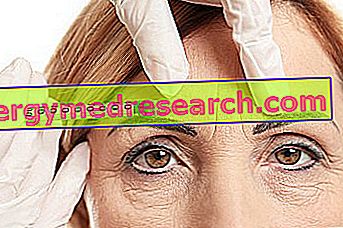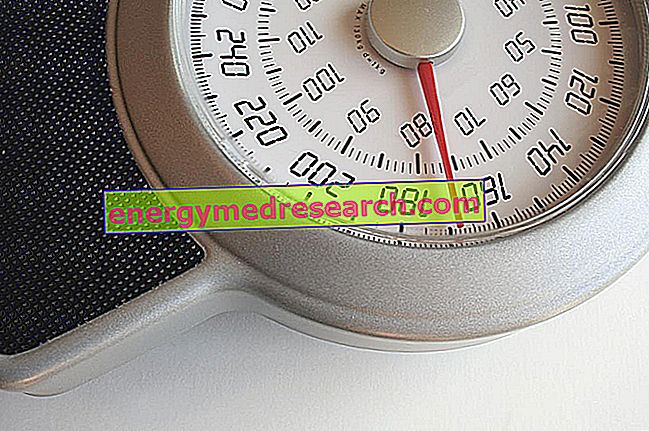Generality
Breast cysts are small saccular formations, usually filled with liquid, which develop in the context of breast tissue. These lesions are quite common in perimenopausal women and sometimes occur in association with fibrocystic mastopathy.

As a rule, cystic formations of the breast are benign in nature and do not evolve towards malignancy; however, the presence of one or more injuries makes clinical monitoring appropriate.
Generally, breast cysts do not require treatment, except in cases where the symptoms and the size of these lesions are a cause of discomfort to the patient. In these cases, it is useful to drain the fluid contained within the saccular formations by means of needle aspiration (a procedure which is at the same time diagnostic and therapeutic); alternatively, although rarely, surgical removal may be indicated.
Causes
The causes of breast cysts are not yet fully known.
These lesions are more common in women between the ages of 30 and 50, however they can occur even during adolescence and after menopause when resorting to hormone replacement therapy.
Alterations in normal hormone levels (such as excess estrogen) and changes in breast tissue (glandular, fibrous and adipose) with age can play a role in cyst development. The probability of their formation decreases, however, sharply after the menopause.
The cysts tend to form at the terminal unit of the lobular duct, ie at the point where the lobules join the galactophore ducts (tubes that carry the milk produced by the mammary glands to the nipple). In particular, the cystic cavities can arise due to an abnormal development of the mammary glandular component and the surrounding stroma; these situations, if they lead to the obstruction of a segment of the ducts by the hyperplasic epithelium, can cause the expansion and accumulation of fluid.
Breast cysts can manifest themselves in the fibrocystic mastopathy . In this case, the symptoms, such as pain (mastodynia) and sense of tension of the breast are more intense in the second half of the menstrual cycle or during pregnancy.
Despite being predominantly a female disorder, cysts can also develop in the breasts of men.
Signs and symptoms
Breast cysts are pockets or cavities filled with liquid, surrounded by an external capsule, which are distributed in the breast tissue and appear to the touch like small, fairly mobile nodules .
In the breast, one or more cystic formations may develop. Generally, these lesions are formed in only one breast, but it is not excluded that they can involve both breasts at the same time. The size of breast cysts can vary from a few millimeters ( microcysts ) to a few centimeters ( macrocysts ).
Generally, microcysts do not cause symptoms, but can be found by imaging tests, such as ultrasound or mammography.
The breast macrocytes can be felt, instead, at the self-examination of the breast, like a grape with a rather soft consistency or a small balloon full of water. On ultrasound examination, on the other hand, these saccular masses have a regular appearance, a rounded shape and smooth and well-defined margins.
Large breast cysts can cause pain ( mastodynia ), a sense of tension and deformity of the normal breast profile, so they can be cause for concern for the patient. In some cases, moreover, transparent or straw-colored nipple secretions may appear. The discomfort and pressure exerted on the breast tissue can be attenuated by draining the contents of the cyst (needle aspiration) with a needle.
Simple and complex breast cysts
- "Simple" breast cysts are fluid-containing lesions that have a very regular shape and smooth, thin walls; these represent the most common cystic formations and are generally benign.
- However, there are cysts that have thicker wall sections or appear as groups of small nodules, separated by septa. Another picture appears when the formation is not uniformly full of liquid, but has some solid elements suspended inside. Usually, these "complex" cysts are biopsied to discriminate their nature, and the interval between follow-up and the other will be shorter than the one set to monitor simple cysts (for example, every 6 months instead of once a year).
Diagnosis
Simple cysts do not increase the risk of breast cancer . However, the presence of one or more cystic formations can make the identification of any new nodules or other variations with respect to the basic framework more complicated, which might need a specialized assessment.
Therefore, when a breast cyst is found at self-examination, it is advisable to undergo a medical examination.
The direct examination with observation and palpation of the breast (breast examination) makes it possible to feel a lump in the breast, while breast ultrasound allows us to assess the presence of liquid and exclude solid parts or septa.
In order to further discriminate the nature of this lesion, the senologist can proceed by taking the content of the formation ( needle aspiration or cysts agocentesis ). This procedure is performed under ultrasound guidance, inserting a thin needle into the suspect lesion and aspirating the material contained therein, which will be subjected to examination.
The presence of transparent liquid, yellow or greenish, usually indicates a cyst in the breast. When the collected material appears streaked with blood, presents solid impurities or neoplastic cells and remains of unchanged size after the agocentesi, instead, it is sent to the laboratory for cytological investigation.

Treatment
In most cases, breast cysts are benign and require no treatment; these formations can remain stable for many years or can resolve spontaneously. However, like other nodular breast lesions, the presence of a cyst must not be neglected and requires a periodic surveillance attitude through self-examination and ultrasound monitoring.
To alleviate transient painful sensations, the use of a bra that can provide adequate support or use painkillers, such as paracetamol, may be helpful.
When the cysts begin to increase in volume and cause discomfort in the patient, on the other hand, an outpatient procedure ( needle aspiration ) can be indicated to drain the liquid from the formations, reducing its volume so as to make the mammary gland less tense and painful. The disappearance of the palpable mass or of the ultrasound finding is an indication of complete aspiration.
However, breast cysts can often form again, as the external capsule remains and can collect more liquid. Therefore, if the lesion persists for two or three menstrual cycles, has a certain tendency to relapse after needle aspiration or progressively increases in volume, it is advisable to consult your doctor to evaluate whether to use the drainage procedure again or to consider the treatment pharmacological (eg oral contraceptives, danazol or tamoxifen) to reduce the recurrence of breast cysts. Even the interruption of hormone therapy after menopause can help limit the disorder.
Only in exceptional cases, ie when the symptoms are particularly pronounced and the lesion develops abnormally or contains blood, can surgical removal of the cyst be indicated.



